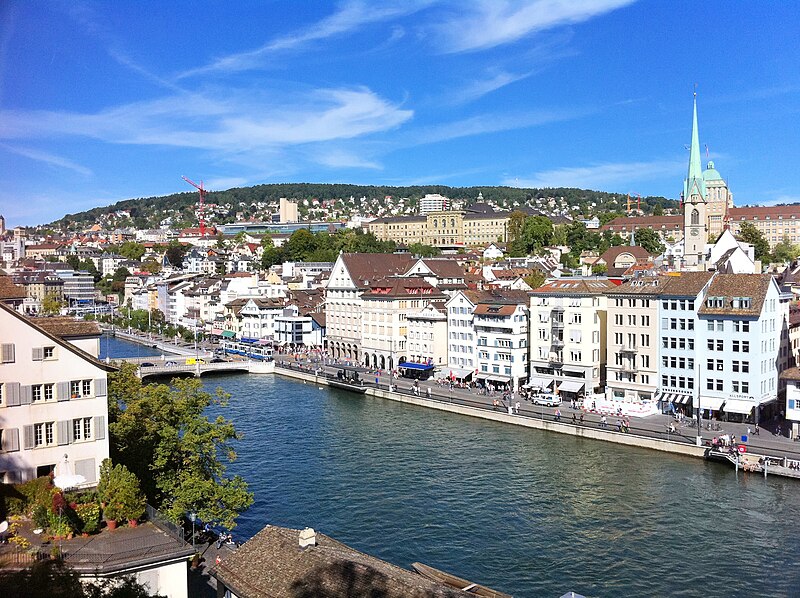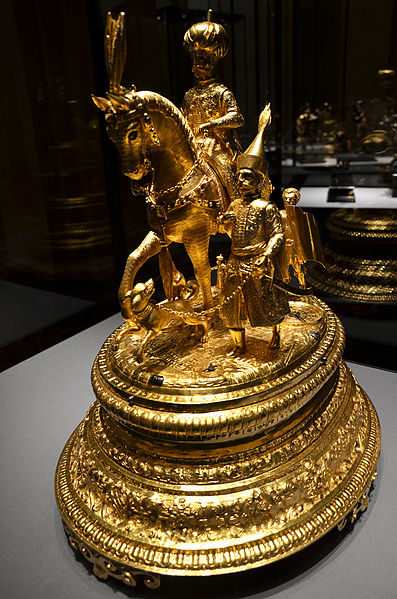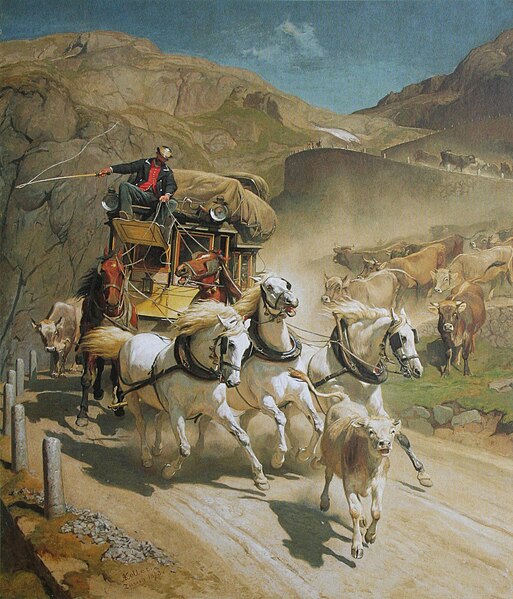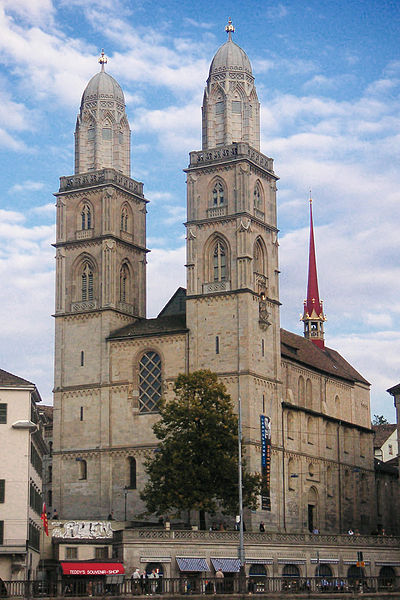Often recognized as one of the world's most liveable cities, Zurich is Switzerland's largest city and a major financial center. Many museums and art galleries can be found in the city, including the Swiss National Museum and the Kunsthaus.
Zürich
Built in 1898 in the historicist style, the museum is one of the most important art museums of cultural history in Europe. The exhibition tour takes the visitor from prehistory through ancient times and the Middle Ages to the 20th century. There is a very rich section with gothic art, chivalry and a comprehensive collection of liturgical wooden sculptures, panel paintings and carved altars, Swiss furnishings and coins. It is conveniently located right next to a major railway hub -- Zürich Hauptbahnhof.
The Lindenhof in the old town of Zürich is the historic site of the Roman castle. It is situated on the Lindenhof hill, on the left side of river Limmat. In 1747, a 2nd-century Roman tombstone was discovered at the site, bearing the oldest attestation of Turīcum, the Roman era name of Zürich. The castle remained intact during the early phase of Alemannic immigration in the 5th to 6th century, but was derelict by the 9th century, when it was rebuilt as a residence for Louis the German. The Lindenhof remained a place of civil assembly into modern times. In the early 21st century, it serves as a recreational space and a green oasis. Its elevated position makes it a favorite point for tourists to get an overview of the geography of old Zürich.
The Beyer Watch and Clock Museum is one of the world's leading private museums dedicated to the horology. It is affiliated with Chronometrie Beyer, a high grade watch retailer run by the same family for generations. The collection is particularly strong regarding early clocks and watches, including several pieces from the gothic and renaissance era, as well as complicated pieces with many complications. Many of the displayed pieces are unique and/or significant in the history of watchmaking, and therefore are often loaned out to major museums around the world.
The Paradeplatz is a square at the Bahnhofstrasse (Zurich's main street and one of the world's most expensive and exclusive shopping avenues) in downtown. It is one of the most expensive pieces of real estate in Switzerland and has become synonymous with wealth and the Swiss banks. The site of the square lay without the medieval city walls, and was incorporated into the town with the construction of the new ramparts in 1642. During the 17th century, it served as a livestock market.
The Fraumünster Church (literally Women's Minster) is built on the remains of a former abbey for aristocratic women which was founded in 853 by Louis the German for his daughter Hildegard. The choir of the abbey includes 5 large stained glass windows designed by artist Marc Chagall and installed in 1970. Each of the 5 has a dominant color and depicts a Christian story.
Located at the Sechseläutenplatz, it has been the home of the Zürich Opera since 1891, and also houses the Bernhard-Theater Zürich. It is also home to the Zürich Ballet. The first permanent theatre was built in 1834; after it burnt down, a new theatre was opened in 1891. It was the city's main performance space for drama, opera, and musical events until 1925. Today, the theatre is an ornate building with a neo-classical façade of white and grey stone adorned with busts of Weber, Wagner, and Mozart.
Zürich
Open in 1910, the Kunsthaus is an art museum housing one of the most important art collections in Switzerland. Its collection spans from the Middle Ages to contemporary art, with an emphasis on Swiss art. Particularly notable are the several preserved Moser interiors in the original section of the museum, decorated in masterful Neo-Grec version of Secession style. The collection also includes major works by famous artists such as Monet, Munch, Picasso, Matisse and so on. The museum is served by the Kunsthaus stop on the Zürich tram system.
The Grossmünster ("great minster") is a Romanesque-style Protestant church. Construction of the present structure commenced around 1100 and it was inaugurated around 1220. It is considered one of the most important sites in the history of the reformation and the birthplace of the Swiss-German reformation. The twin towers of the Grossmünster are regarded as perhaps the most recognized landmark in the city. In keeping with the Romanesque architectural style, Grossmünster offers a great carved portal featuring medieval columns with grotesques adorning the capitals. A Romanesque crypt dates to the 11th and 13th centuries.
Opened in 1887, the Bürkliterrasse is a lake front park designed as a culmination of the Bahnhofstrasse and the lakeshore promenades. The upper end of the Bahnhofstrasse is today's most popular place for market events. This popular, rather small, urban facility, became important at the time of the construction of the Bahnhofstrasse and the quay promenades, and became the elegant meeting point of Zürich's bourgeoisie.
The Uetliberg is a mountain in the Swiss plateau, part of the Albis chain, rising to 869 m. The Uetliberg offers a stunning panoramic view of the entire city of Zurich and the Lake of Zurich. The summit is easily accessible by train from Zurich. There are numerous walking paths leading up to the top from Albisgüetli, Triemli or Albisrieden with frequent water fountains and camping spots. There is also a lookout tower on the top.


























